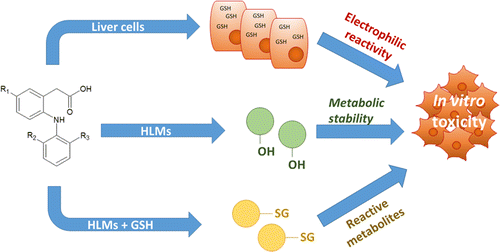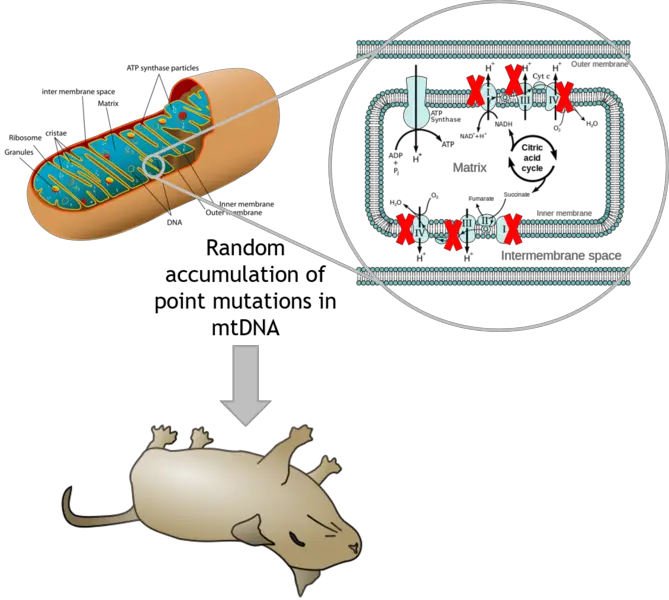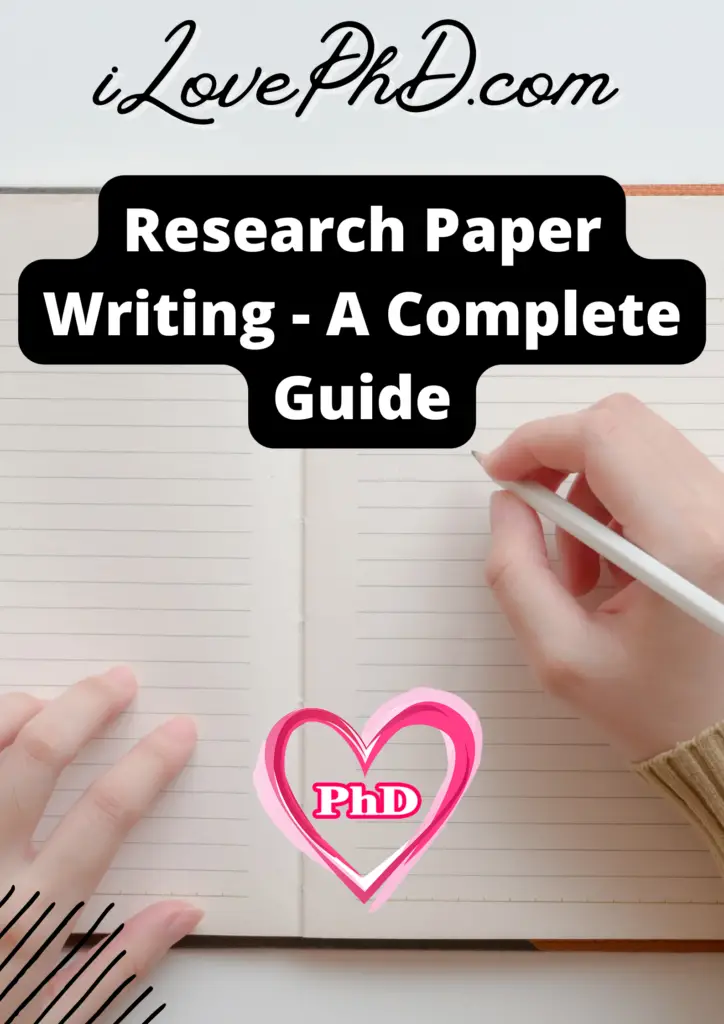Writing and publishing a research paper is important for an/a academician, researcher, and scientist. Publishing the article in a reputed and high-impact factor journal may fetch you a scholarship, and funding to carry out R&D projects and makes your profile strong. Here, in iLovePhD, you can find out everything you need to know to write an effective research paper with a sample research paper format.
What is a Manuscript?
A manuscript is a research work that a researcher writes and submits to journal publications. Manuscripts are reviewed by peer reviewers assigned by journal editors to maintain the quality of the publication. Consequently, published manuscripts will help other researchers in the field to understand the research methodologies, experiments, and results of the work.
Types of Research Papers (Manuscripts)
Scientific journals publish different types of manuscripts based on the scope and requirements of the research articles in the journal. Besides, the articles published by journals are among the following types namely original research articles, review articles, short reports or letters, case studies, and methodologies.
1. Research Paper
This is the most common type of journal manuscript. It may be called an Original Article, Research Article, or just an Article, depending on the journal.
The Original Research format is suitable for many different fields and different types of studies. It includes the full Introduction, Methods, Results, and Discussion sections.
2. Review Articles
Review Articles provide a comprehensive summary of research on a certain topic, and a perspective on the state of the field and where it is heading.
They are often written by leaders in a particular discipline after an invitation from the editors of a journal.
Review research articles are often widely read and cited. These articles are read by researchers looking for a full introduction to a field.
Reviews commonly cite approximately 100 primary research articles.
3. Short Communication
Short communication articles are papers that communicate brief reports of data from original research. Subsequently, editors believe this article will be interesting to many researchers. So, the submitted article likely stimulates further research in the field.
As they are relatively short the format is useful for scientists with results that are time-sensitive (for example, those in highly competitive or quickly-changing disciplines).
The short communication format often has strict length limits. Therefore, some experimental details may not be published until the authors write a full Original Research manuscript. Also, this type of article is sometimes called Brief communication.
4. Case Studies
The case study article reports specific instances of interesting phenomena.
A goal of Case Studies is to make other researchers aware of the possibility that a specific phenomenon might occur.
Also, this type of study is often used in medicine to report the occurrence of previously unknown or emerging symptoms.
5. Methods Paper
These types of manuscripts present a new experimental method, test or procedure.
The method described may either be completely new or may offer a better version of an existing method.
The article should describe a demonstrable advance on what is currently available.
Skills to Write a Good Research Paper
Good communication and writing abilities are essential for every scholar so that the reader/ reviewer understands your idea correctly. An academic writing style is required for research. Academic and creative writing are typically taught as part of a scholar’s research process. Before anyone starts writing their research paper, the following 4 skills to write a good research paper are essential.
Here are some of the most important abilities for writing a research paper. Scholars generally have a certain level of competence over these talents, which they can easily develop during their Ph.D. In and of itself, research aids the researcher’s development of these abilities.
1. Writing Style
The writing style is very important when it comes to academic writing. Everyone must understand how to construct a sentence, a paragraph, and an entire chapter. Also, the sentence should be in active voice.
Scholars learn it during the academic writing process, but, there are many fantastic books available to improve writing style that can be used to improve the skill easily.
2. Vocabulary
Usage of vocabulary in academic writing is very important to write descriptive, analytical, and explanatory verbs repeatedly in the thesis or research paper. It requires a good vocabulary collection to avoid being repetitive and using multiple different verbs every time. When a verb becomes repetitious, you should know what synonyms you can use to replace it. Academic writing does not necessitate a large vocabulary. But, Scholars should be familiar with key English terms that will assist them in writing the research.
3. Language skills
A good research paper writing skill requires scholars to write in English with good proficiency. Scholars can ask someone with a stronger command of the English language to proofread the research paper. Checking the written research article twice before submitting it to the journal will reduce the review comments related to grammatical correction.
4. Data Interpretation and Reasoning
Data interpretation and reasoning abilities are also required to write a good research paper because scholars must think and determine the causes of a result. Good writing must determine what the possible causes, solutions, and explanations are for a situation.
Journal reviewers may find it easy to grasp the work if the data is interpreted in a correct manner.
How to Write a Research Paper?
The first step is to select your target journal before start writing your article. It could be easy to shape your manuscript according to the journal’s requirement, which would increase the chance of accepting your manuscript. After choosing your target journal, start reading the research papers relevant to your work, which are already published in that journal. This can help you to get an idea of the editor’s expectations and guide your writing.
The strongest research papers generally have one or two strong points to make. The authors register those points powerfully with results and suitable evidence.
ilovephd.com
Use clear and simple language which helps the reader to read and understand easily. Ensure that your present research work is unique and novel from already published works, though your concept is existing. Write your article with full confidence to give your reader certainty in your work. Relate your research with key work which is reported already and show how you are working to eliminate the research gap. Plan a logical sequence of the manuscript, and develop ideas succinctly and precisely.
The structure of the research paper is as important as the content itself and helps the reader to get a clear understanding of your work. The format of a research paper is presented below.
Good Research Paper Format
Title
The title of a manuscript should indicate the theme of the research work. It should be clear, specific, and attractive to the readers to read the article.
Abstract
- In addition to the title that grabs the reader’s attention, a well-written abstract is important.
- The abstract is what researchers/scientist reads first to identify the article is worth reading.
- It is suggested to rewrite the abstract after finishing writing the entire manuscript.
- Superfluous sentences and irrelevant statements should be eliminated.
- The authors must highlight the novelty of the work. The abstract should be focussing on the following points.
- What was investigated in the study (State briefly the specific objectives of the study)
- Why was it done
- How was it done
- What are the important findings of the study
- What is the significance of the study
The abstract can also be represented in a graphical format. Some journals mandate to submission of a graphical abstract.
Graphical Abstract
A graphical abstract is a simple, concise, and self-explanatory figure that elucidates the scientific data or the main research findings in a pictorial form. This article explains how to create graphical abstract with simple steps.
It represents the important findings of a research or review paper in a nutshell, which helps the readers to understand the main take-home message at a single glance.
It allows the reader to grasp their attention, to identify more suitable research articles relevant to their research, and to conduct interdisciplinary research.
“A typical graphical abstract should attract the reader’s attention whether to read your full paper or not. If this is achieved, the purpose of your graphical abstract is fulfilled”.
Steps to create graphical abstract
The main purpose of a graphical abstract is to influence the reader’s curiosity, to present the research outcome briefly, and to summarize the findings. The basic steps to create an effective pictorial abstract include:

The first two steps are based on paperwork and the third step requires graphic design software. A logical concept is very important to carry out any research. So, one should decide what is the important message to be delivered through graphical abstract and to whom it is to be conveyed. Therefore, the picture abstract is defined by the concept and the readers.
The second step is to sketch the appropriate visual elements (chemical structure, biological components, mechanical parts, etc.) which portray the research outcome directly and precisely.
Arrange the elements of the sketch in a right sequence either from left to right or top to down to get a meaningful abstract. Ensure that all the elements are connected to each other, arranged into groups that have something in common.
The final step is to design the sketch using graphic design software (Photoshop) or simple PowerPoint. Ensure that all the elements are illustrated with a uniform art style, otherwise, it may look bizarre.
Too many results or conclusions will complicate the visual representation of the abstract. One should think from the reader’s point of view and summarize the most important and specific results in a simple way.
Criteria for an ideal graphical abstract:
- A graphical abstract should be unique, clear, simple, and self-explanatory.
- It should highlight the novel findings of the research without reproducing the results reported in the published literature.
- It should be different from the diagrams/figures illustrated in the article itself.
- It should not include data items, the results should be in a pictorial form.
- It should not include true facts, proven science, and existing results.
Different styles of formatting:
Diagram style graphical abstract:
This type of graphical abstract is widely used in the field of chemistry to represent the chemical reactions, structure, bonding, etc. This is considered the easiest and most simple method to explain the technical findings. This style uses highly technical language and abbreviations with no background context.

Visual style:
Graphical abstract developed by visual style is more professional than diagram style, can be made quickly and easily using PowerPoint. This type of style is frequently used in medical-related journals.

Infographic style:
This is the advanced style that tends to use both text and graphics in a more visually attractive way. The infographic-based image abstracts are developed using design software, which looks more professional and gains the reader’s attention easily.

Comic style:
The comic style of the abstract uses cartoon characters to express the research findings in a humorous way. Therefore, this style helps to cover the maximum number of readers.

According to Elsevier, the technical specifications required to prepare a image abstract are listed below:
- Image size: The image should be 531 X 1328 pixels with a resolution of 300 dpi.
- File type: TIFF, EPS, PDF
- Font: Times, Arial, Courier or Symbol with large font size.
- Any text or label should be part of the image file. The abstract should be one image file.
Keywords
The keywords should be relevant to the work and it should be easy for the readers to search for the manuscript. Five to seven keywords are essential.
Introduction
- The introduction should clearly address the significance and impact of the manuscript.
- The research on a particular area may be intensively published so that describing novelty is of significance.
- It should have a clear point regarding the advancement or improvement and a motivation to carry out the research work.
- Discuss the literature pertaining to the work and identify the research gap.
- The literature review should take into consideration the current state of the literature.
- Frame the objectives of the study clearly based on the research gap.
- It is suggested to write the introduction and conclusion last, once the skeleton of the manuscript becomes clear.
Literature Review
A literature review is a study of scholarly sources in a particular research area. The literature review provides knowledge about the current scenario. This allows you to find the appropriate methods, theories, and research gaps in the existing research works. It is a process of analyzing and evaluating the research work to get a better understanding of your topic.
Steps to Write a Literature Review
Step One: Be clear on your Areas of Research
Before you get started doing the review, you need to be clear on your research topics and keywords. Make sure that you only get scholarly articles and books in those areas.
Step Two: Search for the literature
Select the most relevant papers through the literature search. Conduct a wide-ranging bibliographic search of books and articles in your area.
Read the abstracts online and download and print those articles that pertain to your area of research.
Step Three: Read and identify the gaps
Read the literature one by one and summarizeIdentify the research gaps and research opportunities from the literature.
Step Four: Organize the structure of the review
Organize the literature review using familiar structures for a better flow of reading. The structure can follow Chronological, Thematic, Methodological, or Theoretical order.
Step Five: Begin to Write a Literature Review
Start to write literature by discussing the overall implications of the literature. Also, make suggestions for future research based on the gaps you have identified.
Ensure the writing style should be clear and concise academic style.
Methodology
- The methodology should elaborate on how the research study was conducted.
- It includes experimental procedure/steps followed, preparation methods, instrumentation used, and formula.
- The readers should get a clear vision of how the research study was carried out by reading the methods section.
Results and Discussion
- The results and discussion section of any manuscript are discussed in detail the research findings.
- The discussion needs to be beyond the findings and emphasize more on the claims.
- The interpretations of the experimental results should be explained scientifically, and logically in line with fundamental science and principles.
- To support the findings, the results can be expressed in any format (plots, models, expressions, etc.).
- The results reported in your manuscript should be original, reliable, ad reproducible.
- The results obtained in the present study may also be compared with the results reported in the literature.
Conclusion
- It includes a summary of the research findings and the overall impression of the study.
- A good conclusion will complete the article’s arguments, research outcome, and further scope of studies.
- It should be strong enough to convince the researchers.
References
- Citing references at appropriate places in the paper is necessary and important to avoid plagiarism.
- When you cite a reference, make sure that you understand its relevance to your research work.
- The references should be listed at the end of the manuscript and each journal has its own referencing style.
Acknowledgment
The authors can submit a brief acknowledgment of any financial, instrumentation, and academic support received pertaining to research work.
Knowing the ethics in the publication is equally important to writing a good research article.
Important Publication and Research Ethics
Publication and research ethics involves systematizing, defending, and recommending concepts of right and wrong conduct in the scientific research experiment. Knowing and following the ethical guidelines while conducting research is very essential.
Ethical Guidelines for Research and Publication
1. Journal Reporting Standards
The good journal reporting standards follow, presenting accurate results in the manuscript.
Every statement in the paper with proper justification and appropriate references, and avoiding misleading or manipulated statements in the manuscript.
A work that abides by these ethical practices ensures the high possibility of acceptance.
2. Plagiarism
Authors should ensure that they have written and submitted only entirely original works.
If they have used the work and/or words of others, this has been appropriately cited.
Plagiarism in all its forms constitutes unethical publishing behavior and is unacceptable.
Also, Read 10 Types of Plagiarism and 5 Tips To Avoid Plagiarism.
3. Public Dataset Access
Reporting authors should make their core research dataset in the public scientific forum or on University websites.
It should be maintained for atleast 5 years after the publication of the journal.
This would help other researchers in the same area to make comparative studies.
Also, it ensures the reliability of the conducted experiment.
4. Involvement of Hazards and Animals Research
Ensuring the participation of animals or human participants in the research is another important ethical guideline.
If the research work involved animals, the authors should ensure that all procedures were performed in compliance with the legal guidelines.
Also, it should be monitored and approved by the university committee or Lab authorities.
If the work involves hazardous chemicals, procedures, or equipment that have any unusual hazards inherent in their use.
The authors must clearly identify these in the manuscript.
The approval certification for the usage of hazards and animal participation should be submitted to the journal.
5. Multiple Manuscript Submission and Publication
Publishing the same article in more than one journal with minor modifications is an unacceptable ethical practice.
However, translating a highly reputed published manuscript to another language is acceptable.
Also, some important research improvements in the same work are also acceptable.
In such a situation, the author must cite the first work in the second work.
Avoid Submitting Research Papers in Fake Journals
There are a lot of fake journals that have a seemingly reliable website and claim themselves to have a high impact factor journals. Fake journals are difficult to identify in most cases. In order to help researchers to find fake journals, this article gives some common identifications and required verification before submitting your valuable research findings to a journal.
Some Common Indicators of Fake Journals
Using the following common indications a Fake journal can be easily identified.
- No address: Some journals do not reveal their address or contact information on their website other than an email address listed.
- No proper review information: These journals mostly hide their review process and editorial board details of their journal publications.
- Publication: These journals promise rapid publication.
- Topics: These publications simply include wide-ranging unrelated fields of study.
- Age of the website: There are many tools available to find the age of the journal’s website. Most of the fake journals claim themselves more year impact factor than their actual age on the internet.
- Peer review process: There is no mention of a peer review process on the website or basic submission requirements.
- Fees: Some predatory journals ask for extremely high processing fees for publication.
- Ethics: Fake journals do not consider research ethics.
Use the following steps to identify a fake journal.
- Publisher The first step, check the publisher of the journals? A publishing company, a professional association, a scholarship association, or a university. Reputable publishers will never publish fake journals.
- Verify Editor or Reviewer Verifying the editor-in-chief, senior editors, and the reviewers of the journals are the best way to identify the fake journal. Reputable journals always list their editorial board members. Each of the editorial members can be easily tracked to their home university. If you cannot track who are the editorial members, it is likely that the journal is fake.
- Number of Volumes Published A good volume of publications with highly impactful research article issues ensures the journal is not fake.
- Review Process Fake journals often guarantee someone’s work to be published soon with a quick review process. In most cases, quick review processed journals are either fake or highly paid journals. They usually publish without any revision. It will lead to retraction of the whole journal from indexing in the future. Good journals must have adequate review processes. The processes may take time at least 4 to 6 months. Premier journals may even take a longer time.
- Verify Indexing Finally, verify whether the journal is on Scopus indexed, Web of Science, or Scimago database. Most of the reputed and mainstream journals are indexed in any of these databases. Following are the top abstract indexing agencies: Thomson Reuters indexing such as Zoological record
Pubmed
ISI Web of Knowledge or science
Scopus
Researchgate
Academia.edu
Google Scholar
Directory of Science
SIS ( Scientific indexing services ) However, It does not mean that the journals are not included in those databases. but, if the journal is not indexed as well as not satisfy any of the above 4 verification steps, that particular journal is suspected to be a fake journal.
To find the right journal indexed in Scopus or SCI to submit your written research paper, use the following links
How to Find Scopus Indexed Journals?
How to Identify SCI Indexed Journals?
I hope, this article would help you to know how to write your first research paper and submit it to a good journal.



